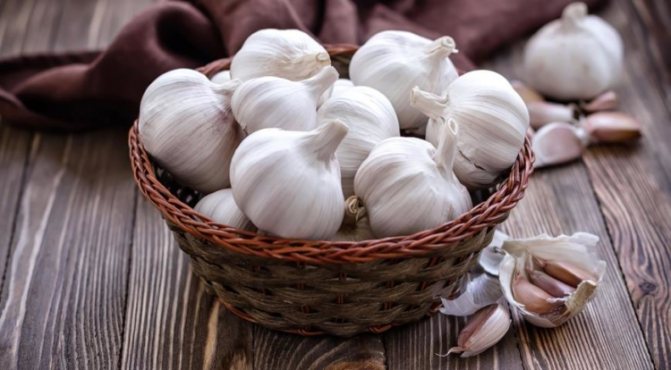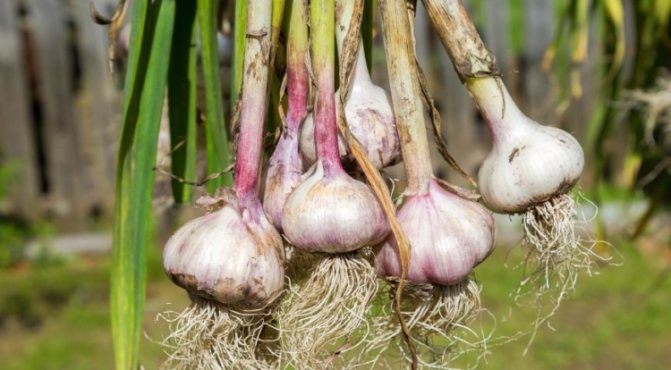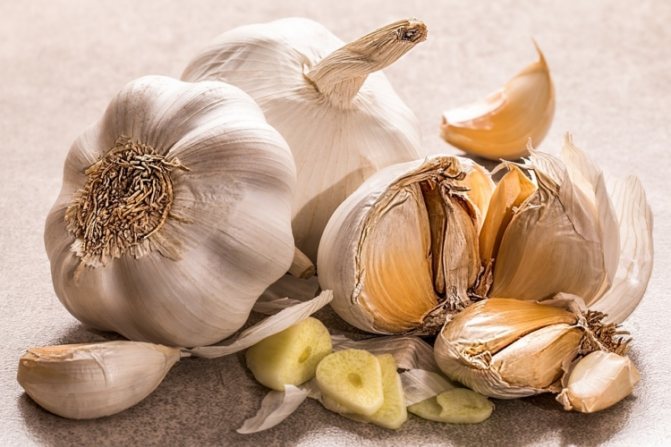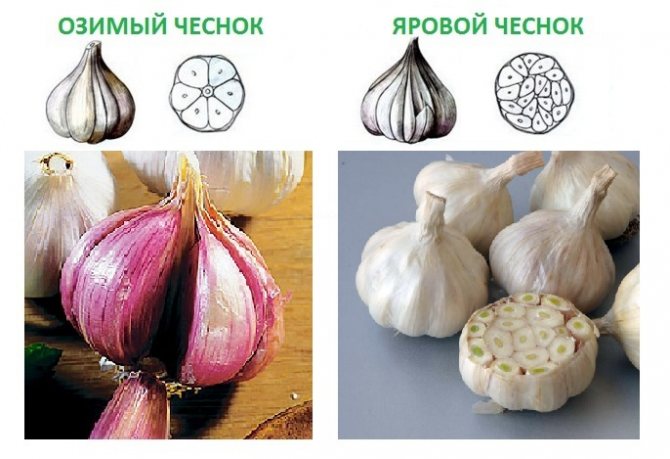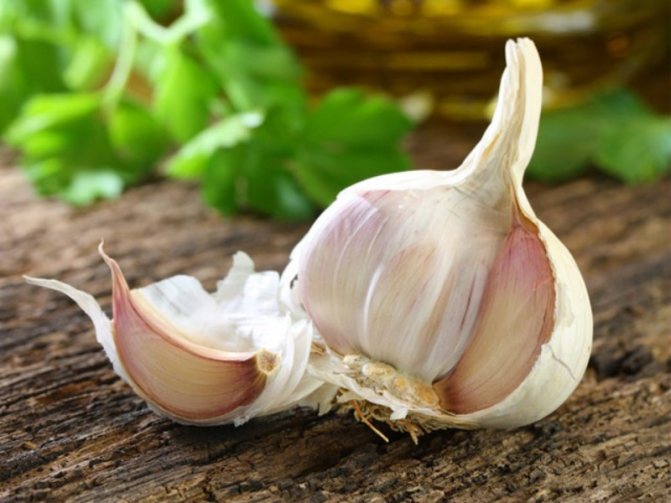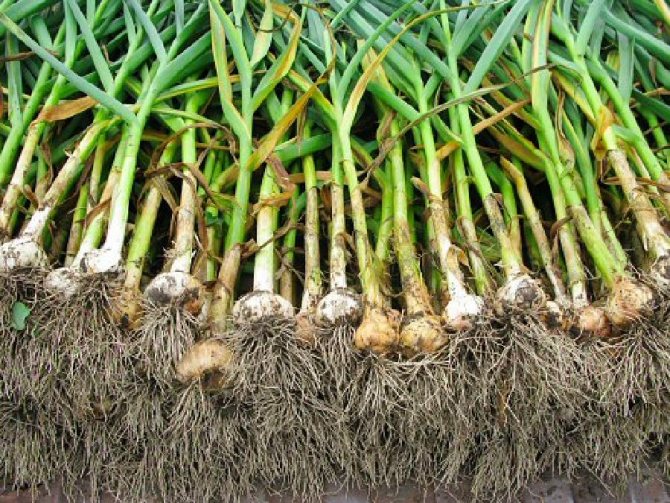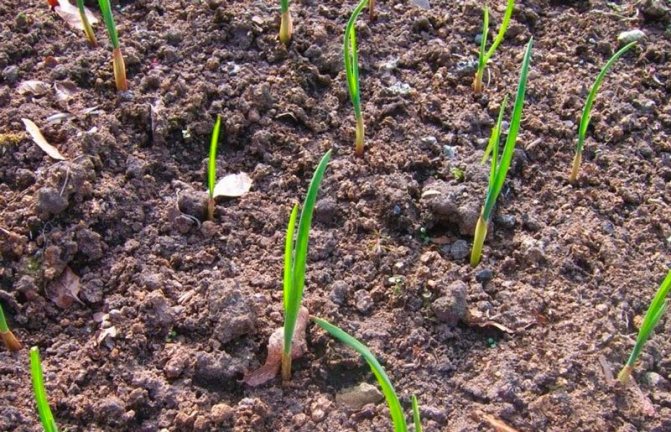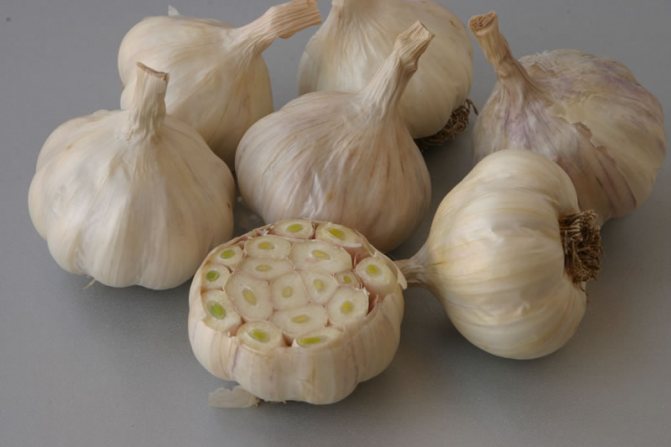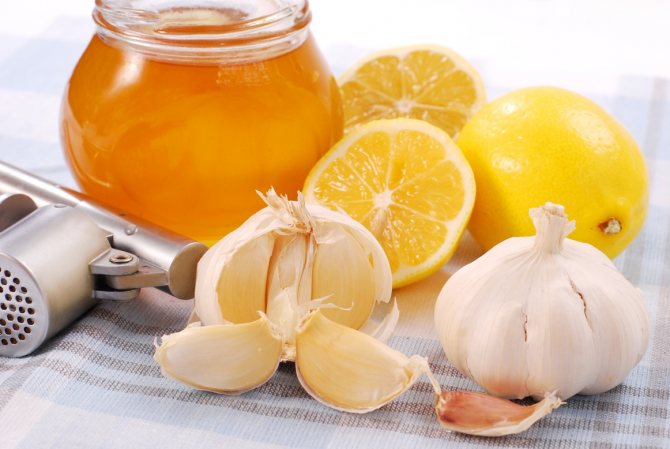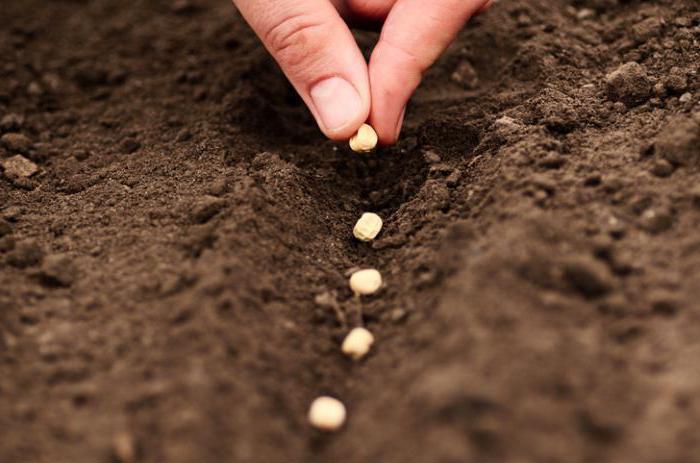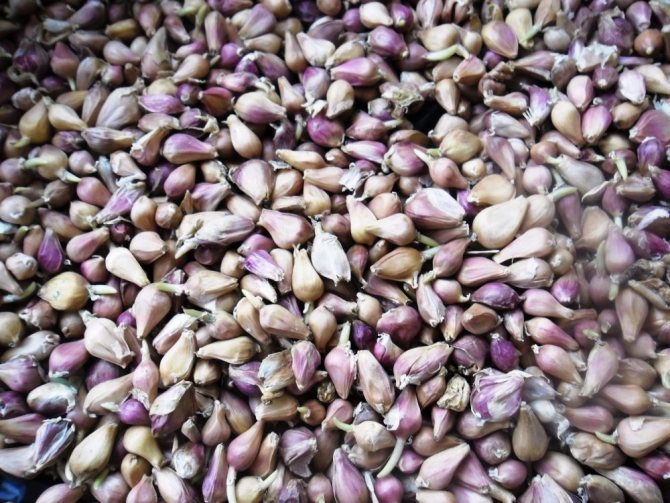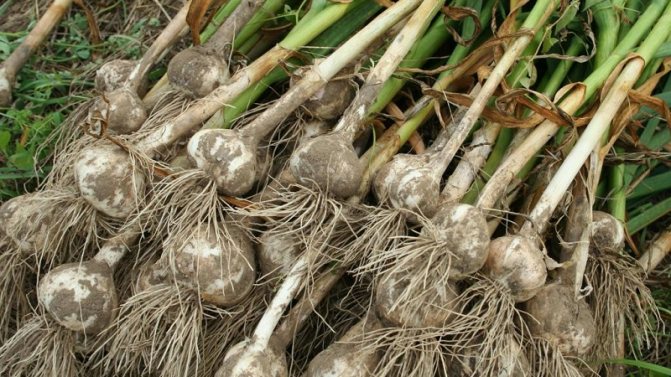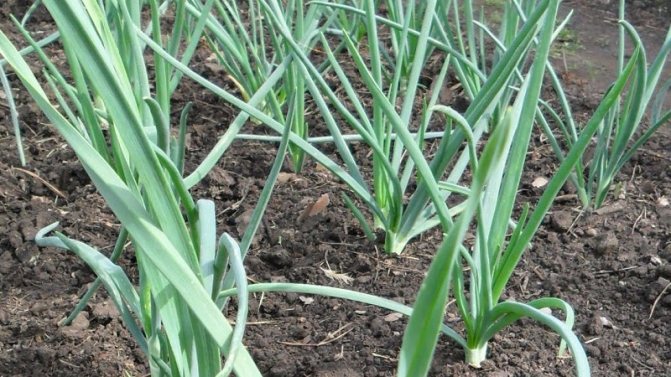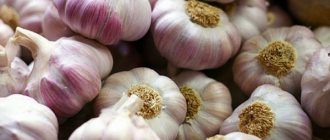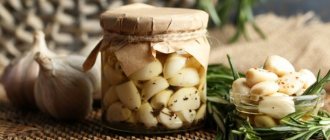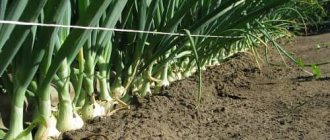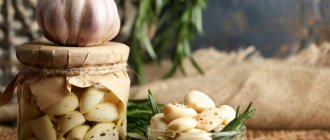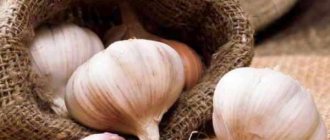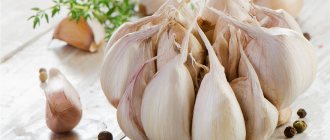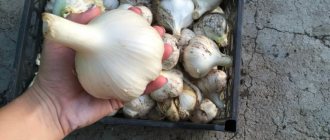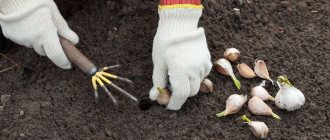- Garden
- Vegetables
- Spring and winter garlic - differences and characteristics
12. 12. 2015

It often happens that the gardener knows about the existence of winter and spring garlic, but cannot always distinguish between them. In rare cases, the summer resident, in principle, has no idea about any difference between them and can plant winter instead of spring and vice versa. In this case, it is not necessary to count on a good and healthy harvest. But in fact, it is easy to distinguish these two species from each other, so study and remember.
- 2 How to distinguish spring garlic from winter garlic in appearance
- 3 Other differences
- 4 Which one is better?
Differences between winter and spring garlic
Spring and winter garlic - what is the difference between these types? Perhaps the main difference between these two vegetables is the planting time. Winter varieties are grown, as a rule, in the fall season, and spring varieties - in the spring. But this way of recognition is not entirely correct, because any type of garlic can be planted both in spring and autumn. It's just that the biological characteristics of crops are different, so they should be planted precisely at one time or another.
Winter varieties take root best in the fall, as they have a higher chance of withstanding the cold. By planting garlic in the fall, you can free up time to grow other plants, and early harvests allow you to use garlic to harvest other garden crops.
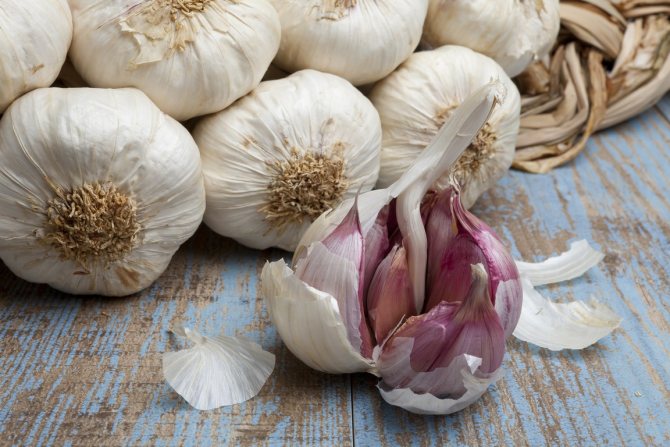

Spring garlic
Spring garlic will not be able to take root well in autumn, but it has the longest shelf life, in contrast to winter garlic. Therefore, it is recommended to plant it in the spring.
Therefore, planting times and storage times are conditional differences between cultivars. They can be planted both in the spring and in the fall, but it is worth remembering that, without observing the time periods, you can not think about a good and high-quality harvest.
In addition to these characteristics, the varieties have more obvious and characteristic differences. How to distinguish winter garlic from summer
They should be distinguished by the following features:
- Varieties can differ in the number of teeth in the bulb. Winter garlic has less than spring garlic (6-10), but they are much larger;
- Winter garlic has more even cloves, with an even amount. They are evenly distributed around the stem;
- Spring garlic has more than 15 cloves. They are located in a chaotic manner and vary in size;
- The husk is also different for both varieties. Winter varieties have a harder and denser shell, but the husk of spring garlic is soft;
- The structure of the bulbs of the winter variety has a thick and hard core in the center, but it is not observed in the spring variety;
- Winter garlic is the only one who "lets out" arrows, from which grow bulbs that can add variety to planting methods. This is the clear difference between the varieties. Of the spring varieties, the only one who shoots is "Gulliver";
- In spring garlic, the stump is tender and of small thickness, while in winter garlic it is hard and dense;
- The soil of the varieties also has characteristic differences. If the winter variety feels good in sandy loam soils, then only light loamy soil is suitable for the spring variety. The first type is also distinguished by its frost resistance;
- You can also distinguish between cultures by reproduction. Spring is propagated by cloves, winter - by air bulbs.
Perhaps these are the most important points that answered the question: what is the difference between spring garlic and winter garlic.
The varietal diversity of this species is great. Below are the best and most popular varieties of spring garlic.
Which one is better to choose, when and why?
Each type of garlic is suitable for a specific purpose. Therefore, if you do not know which one is better to choose, then decide what you need it for:
- For housewives who make preparations in the winter, winter varieties are more suitable. They are full of nutrients, there is no need to store for a long time.
- If you are planning to plant garlic on a plot of land next year, then you should choose a spring garlic, since it can last until spring and give a new crop.
- Agrofirms that grow and sell garlic prefer spring varieties. The yield of spring is higher. Less maintenance required, does not fire up arrows. Has a long shelf life.
- Gardeners often plant winter garlic. The heads are larger, the teeth are large, and has an attractive appearance.
It is easy to distinguish spring from winter in appearance. Each type of garlic is healthy and essential to use. But, which one is more suitable for you, you choose. It is recommended to plant both types on the site.
Types of spring garlic
Victorio
Bulb garlic - growing
It is an early maturing, high-yielding species. It has no arrows, the main feature is its high resistance to pests and various fungal diseases. The bulbs are rounded, slightly flattened at the top and bottom, the scales are yellowish-white in color. The leaves grow up to 20-25 cm in height, and in width - no more than 1-1.5 cm. With proper care, the leaves are deep green in color, have a slight bloom.
Gulliver
This is the most common variety in our country. One cannot help but love him, because he is distinguished by the impressive size of fruits and leaves. The cultivar is medium late and the only arrowhead of the spring species. The growing season lasts from 85 to 98 days.
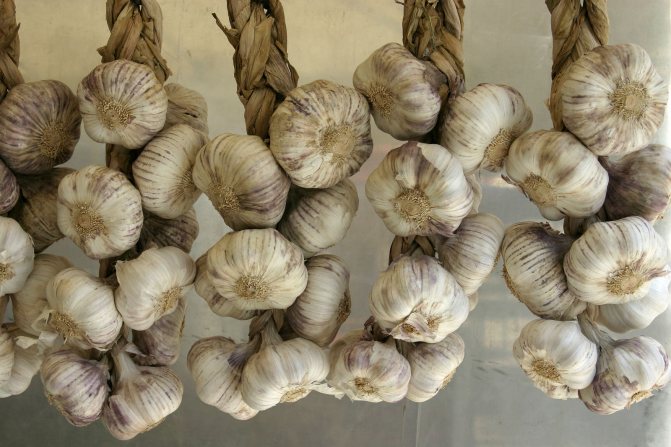

Spring garlic is very prolific
The leaves of the plant can grow up to 55 cm long and up to 4 cm wide. They are dark green in color, with a thick waxy bloom. One bulb is capable of producing 8 to 12 leaves.
The bulb is covered with grayish scales, the weight varies from 100 to 120 g, but in some cases it can grow up to 250 g. The teeth contain from 3 to 5, they are quite large.
The variety was bred in 2001 at VNIISSOK, after a while it was recommended for cultivation in all regions.
Yelenovsky
Despite the fact that the variety is classified as spring, it can also be used for planting in the fall. The variety is mid-season, does not shoot arrows. The growing season lasts from 110 to 120 days.
The leaves grow up to 30 cm with a width of 13 mm. They have a slight waxy coating. The bulbs are small, rounded, weighing up to 20-25 g, covered with dry white skin.
One head can contain from 16 to 18 teeth.
The variety is widely known for its high yield. From 1 hectare of land, you can harvest 3.7 tons of garlic. Observing the rules for storage conditions, it can last up to 2 years.
Flavor
A French variety that has long gained its fame in countries such as Spain, Holland, Bulgaria, and now in Ukraine and Russia. Non-shooting view.
A garlic bulb of medium size. It can weigh about 60-80 g. It contains 15-20 small teeth. It is covered with dry, translucent scales.
Garlic Flavor has excellent yield and market performance. Bulbs can be stored for up to one year if stored correctly.
How do they differ from each other
We will analyze the criteria by which winter crops are distinguished from spring crops, and also look at photos of various varieties.
In appearance
How to distinguish varieties by their appearance? First of all, it is worth noting the shape of the head and the number of teeth. In winter crops, as a rule, there are 6 or 8. They are large and almost the same in size.
In spring, the number of cloves reaches 20 pieces, they are all different in size. Arranged in a spiral - the closer to the middle, the smaller.
Winter garlic has arrows with bulbs. Because of them, the head becomes smaller in size, since the arrows take up a large proportion of nutrients, so they must be removed. In spring varieties, arrows are absent. The husks of winter crops are harder and denser, while those of spring crops are softer.
Taste
Most gardeners note that the taste of spring varieties is softer and more piquant. While many winter varieties are distinguished by their pungency and pungency.
By composition and properties
There are many vitamins and useful elements in the arrows (leaves) of winter varieties: ascorbic acid, vitamins B1, B3, provitamin A. Garlic heads contain polysaccharides, vegetable protein, fats (essential oils).
After ripening, a lot of fructose and glucose are formed in the cloves. They are well absorbed by the body and have great value for human health. In addition, winter varieties boast a high content of fiber, starch, and organic matter.
Vitamins are represented by carotene and niacin. Separately, it should be said about thiamine - it is found only in garlic. All of these microelements are useful for the human body: they participate in redox processes, have an excellent anti-inflammatory effect, and act as natural bactericides. In addition, winter crops contain phosphorus, potassium, copper, sulfur, selenium, zirconium, sodium, and calcium.
As for spring varieties, they are not inferior to winter ones in terms of the amount of nutrients. Iodine is of particular importance: 1 kg contains 0.94 mg. Garlic also contains amino acids, including lysine. Essential oils are characterized by high antibacterial properties.
Important! The chemical composition of both spring and winter garlic depends on the variety, soil, climatic conditions of the region, storage conditions, and the composition of the fertilizers applied.
By ripening period
Spring crops ripen in the second half of summer, so the harvest is harvested in August. Winter crops ripen much earlier - at the beginning of summer. Determining whether the bulbs are ripe or not is very simple: the leaves of the plant should turn yellow and dry.
By landing time
This is the main difference between the two cultures. Winter crops are planted about a month before the onset of the first frost. As a rule, this is the end of September - the beginning of October.
Winter crops have excellent frost resistance and tolerate harsh climatic conditions. Spring, on the other hand, does not tolerate weather changes, so they plant it in early April. - it is necessary that the earth warms up at least a little.
By keeping quality
Spring garlic is stored better than winter garlic. It does not lose its taste and marketable appearance up to 1 year. Some varieties can be stored at low temperatures for up to 2 years.
The main thing is to store the vegetable in a dry, dark and cool place. Most winter varieties are stored for a maximum of about six months.
For care
Yarovaya needs more careful care, it needs fertile soil. Also, the variety "loves" feeding, which give the plant the necessary minerals.
Winter crops are more unpretentious, it is necessary to fertilize them in 2 times less. Both varieties need regular watering and weed control.
Planting spring garlic
How to store garlic
In order for the harvest to be high and fertile, it is important not only to properly prepare the soil, but also to carefully consider the choice of spring garlic seeds.
When planting, it is important to choose large cloves and bulbs. This should mean that the yield will be high and the bulbs themselves will be large.
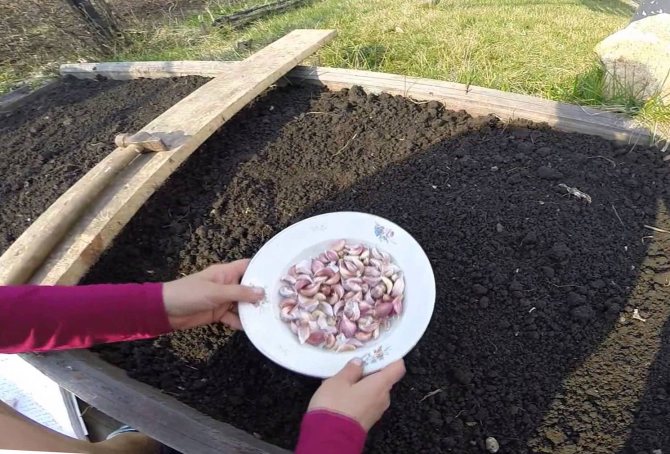

Planting garlic outdoors
It is also important to pay attention to the external component of the teeth. You can distinguish good from bad by their hardness and density. Avoid soft, flabby prongs that have yellow spots, rot, and mildew.
When planting the cloves, they should not be peeled off. 12 hours before planting, the planting material is disinfected in a solution of potassium permanganate or copper sulfate.
Before planting, the soil should be loosened and leveled. The grooves should be 3-4 cm deep. The teeth are planted with the bottom down. The distance between them should be 8-12 cm. From above, the garlic is covered with earth and lightly tamped.
Also, the soil needs mulching. For this, you can use straw or sawdust. The thickness of such a layer should be 2-3 cm.
Recommendations for growing garlic
A good harvest is unthinkable without observing agrotechnical conditions: choosing the right site, timely planting and subsequent care.
Boarding time
Winter garlic is planted in the fall, but 2 months should pass after the previous crop is harvested. This should be done 2 weeks before a constant low temperature is established on the street. It is not worth rushing as well as pulling with planting - this way you can lose planting material.
The spring variety is planted in spring, no later than early April. It is not necessary to wait for complete warming, the main thing is not to miss the time when the earth is still full of moisture after the snow melts. If he did not ascend, then the moment was lost.
Is it possible to plant spring garlic in the fall before winter
For fans of experiments who are wondering whether it is possible to plant spring garlic before winter, how much effort must be made, you can answer the following. A spring variety planted in autumn will only grow if it is well insulated with mulch. But in regions with especially severe winters, you should not risk it, since the success rate there will be low, which will nullify all efforts.
Care
What soil does garlic like?
To get a good harvest, he needs to be properly cared for. First of all, the soil must be constantly loosened and rid of weeds. When garlic is just starting to grow, it needs to be provided with enough water. After that, the amount of water gradually decreases.


Spring garlic in the garden
Be sure to apply mineral and organic fertilizers. As soon as the feather grows 7-10 cm in length, nitrogen fertilizers are applied.
Also, during the summer season, garlic is fed 2-4 times with phosphorus-potassium fertilizers.
The best spring varieties
The top 3 best spring crops look like this:
- Yelenovsky. Rounded white bulbs were liked by many gardeners. The weight of one head ranges from 30 to 40 g. The teeth are soft pink, there are about 25 of them in one bulb. Elenovsky is stored for a long time - about 2 years. The variety has a high yield and resistance to fungal diseases. The care does not require special knowledge, the main thing is to water and remove weeds on time.
- Aleisky. Late-ripening variety, stored for about 9 months on average. The best precursors for planting are cabbage, cucumbers, potatoes. Disadvantages: easily exposed to onion flies, which is why it is necessary to apply top dressing and fertilizers on time. It is widely used in food preparation and canning.
- Flavor. This variety came to us from France and has won the attention of many gardeners. Resistant to fungi and parasites. The heads are medium, the flesh is firm, medium-sharp. It is characterized as a fertile variety, excellent for growing in the middle zone of the country.
Cleaning and storage
Storing spring garlic
You can determine when to harvest when the leaves turn yellow and gradually begin to dry out - this is the first sign that the harvest of spring garlic is ready to be harvested. Cleaning is done in dry weather, until the second half of September.For the first hour, the plant should lie on the ground, the next time it is dried under a canopy, provided that the temperature is warm. You can do this in the attic. During this time, the heads fully ripen. If the heads of garlic are under the scorching sun, this will significantly shorten the storage time.
Plants can be laid out in an even layer on a surface or netting. They can also be tied in medium buns and hung. It is important that there are no damages, dents or scratches on the bulbs, otherwise various kinds of microorganisms can penetrate there, because of this, the shelf life will be shorter.


Storing spring garlic
Garlic tied in braids is best kept on the wall. For this, it is recommended to use bags made of paper or cardboard with air access. The bags are stored in a cool dry place. This is a warm storage method. Dried leaves should be cut to 5 cm from the head neck. Cutting too short can damage the bulb. In cold conditions, the garlic bulbs are placed in a dry room or refrigerator with a temperature of +1 to +5 degrees.
Choosing a landing site
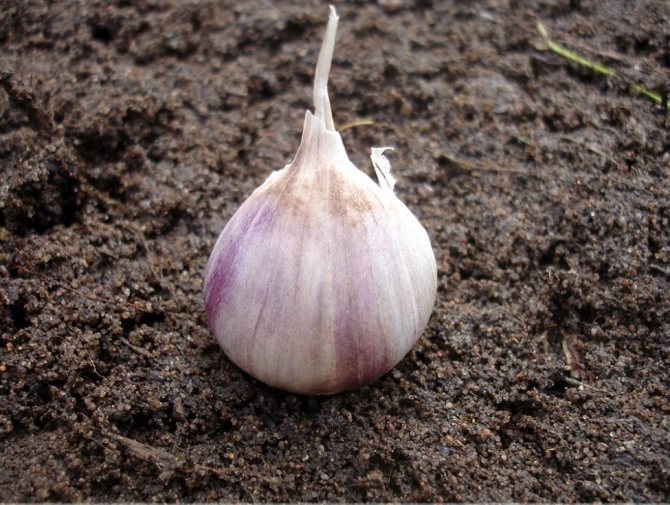

Garlic feels good on fertile cultured light loamy or sandy loamy soils with a neutral reaction. Since autumn, they have chosen a garden bed protected from the north wind in a sunny place with a slight slope, which ensures water flow. Low-lying areas where snow lies for a long time and water accumulates should be avoided.
Digging the soil to the depth of a shovel bayonet, 3 cups of wood ash, half a bucket of compost or humus and 10-15 grams of complex mineral fertilizer are applied per square meter of area.
Is garlic good for the heart?
Is garlic good for the heart and for the human cardiovascular system: it is able to lower the level of cholesterol in the blood, prevents the occurrence of atherosclerotic plaques. Although this effect is only of a short-term nature, therefore, proper nutrition in conjunction with a healthy lifestyle is not about class = "aligncenter" width = "840" height = "480" [/ img]
The culture is able to dilate blood vessels, as a result, - a decrease in blood pressure. Undoubtedly, this property of the spice is very useful for hypertensive patients.
Is garlic good for the stomach?
Garlic can have a beneficial effect on the condition of the gastrointestinal tract, in general, and on the stomach, in particular. But on one condition: the digestive system must be completely healthy, otherwise, it is better not to use a hot spice in order to avoid exacerbation of chronic diseases.
According to recent studies, garlic stimulates the production of digestive enzymes and the secretion of bile, which has a positive effect on the digestion and absorption of food: the feeling of heaviness after eating will be completely unfamiliar to those who systematically eat a clove - another hot spice. It also has a beneficial effect on the intestinal muscles, improving its peristalsis, inhibits fermentation processes in the body caused by microbes and harmful bacteria.
WHAT GARLIC TO LIE?
According to the State Register, garlic is the worst stored varieties in Memory of Ershov, Celestial, Triumph and Jubilee Gribovsky
- maximum 5 months. A little longer, up to six months, are stored
Agate, Altair, Amethyst, Brodokolmaksky, Vyatsky, Pomegranate, Granite, Dobrynya, Elizar, Zooksky, Korinka, Commissar, Azure, Doctor, Losevsky, Odintsovsky jubilee. Onyx, Opal, In Memory Of Victor, Moscow Region, Sail, Sarmat
.
Up to 7 months varieties are able to hold out Gladiator, Demidov and in Memory of Novichkov
, and up to 8 -
Herman, Kasmala and in Memory of Alekseeva
... But the best results according to the results of storage are shown by varieties
Belozerovsky and Otradnensky
, plus they retain their properties for up to 9 months, and
Reliable
up to 11 months. But of course, all these figures will be real only if the storage rules are followed.
Garlic is considered the most common and versatile vegetable crop. It is used not only in the culinary field, but also in medicine when creating medicinal decoctions and mixtures. There are two main types of garlic - spring and winter. Before you start planting such a vegetable, you need to figure out what exactly is the difference between winter garlic and spring garlic.
STORING GARLIC: FIRST CONCLUSION.
Garlic is not stored if it is affected by fungal or bacterial diseases, as well as mites. Carefully inspect the heads that are being stored and remove damaged ones in time! To protect against diseases, it is necessary to observe crop rotation, disinfect planting material, and also remove affected plants from the garden during the growing season.
RARE PLANT SEEDS FOR YOUR GARDEN - FREE SHIPPING. PRICES ARE VERY LOW. THERE ARE REVIEWS


How carefully do you follow the storage rules: humidity and temperature? Is your garlic too hot and cold and dry? According to the rules, the optimal storage temperature for garlic is from 2 ° to 5 ° with an air humidity of 50%.
Can you create such conditions in the apartment? I don't think so ... The humidity in the refrigerator is always much higher, the temperature in the room is higher.
STORING GARLIC: SECOND CONCLUSION.
The garlic was not preserved, as the storage conditions did not suit it.
What am I doing? I store garlic in a plastic container with a lid that has holes in it. And I keep it in a wardrobe in the coolest room in the apartment (the air temperature there is about 18 ° in winter). Under these conditions, garlic without protection in the form of a container, a jar and its own scales will dry quickly. Therefore, it is very important to maintain the integrity of the surface scales of the head of the garlic. And for this, it must be thoroughly dried, remove all diseased or damaged heads, put the rest in a container or jar, cardboard box or clay pot and place it for storage in the coolest room with low humidity. Then your winter garlic will last until the next harvest!
But what if you did everything right, and the garlic still does not survive?

